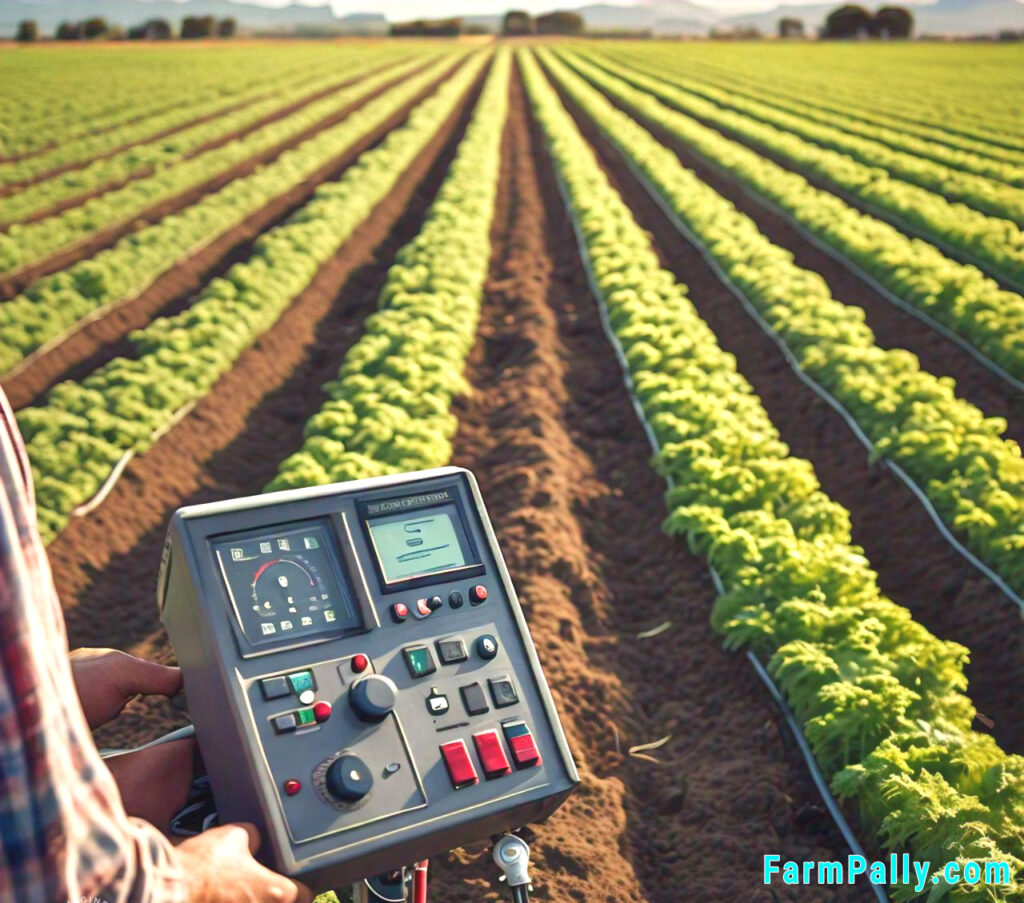What is a Remote irrigation monitoring and control system?
A remote irrigation monitoring and control system helps farmers to monitor remotely and control different aspects of the irrigation system using a computer.
This helps in making informed decisions, conserve resources and produce a profitable yield.
How Irrigation monitoring and control systems work?
It requires the installation of different sensors around the farm, the connection of a communication hub via cellular or wireless connection, and the collection of data for assessment.
This data can be viewed and analyzed in real-time on a mobile device.
The sensors keep checking the moisture content of the soil using a moisture sensor and updates the data on the website.
The farmer can check the moisture level from a remote location and control the water supply.
So, there is no loss or damage to crops or plants due to water-logging or drought.
Various Internet of things (IoT) irrigation monitoring and control projects have been developed to monitor and control the supply of water from a remote location.
The system is connected to the internet using a Wi-Fi module.
A processing unit such as Arduino board is used to send the control signals and to connect to the desired website or app.
The website or app shows motor or valve status and field moisture level.
Advantages of Irrigation monitoring and control systems
Presently, there is no single system to control and monitor all aspects of agriculture.
There are many vendors who are selling various farm irrigation control system which can be easily configured to meet the needs of their clients.
Irrigation monitoring and control systems help in optimizing water budget, irrigation schedule, or expanding the operation to the next level.
Be it deficit irrigation or water conservation, accurate soil moisture measurement leads to better crop production and quality.
A weather station solution for farmers can provide accurate, continuous, real-time recording of temperature, relative humidity, wind, rain, solar radiation, and much more information.
The analytical features like disease indices, degree days, chill portions, and wet bulb can be used for crop protection.
This system coupled with an alerting module can notify growers of dangerous weather conditions.
The real-time data can be viewed through internet enabled PC, tablet or smartphone.
Types of Irrigation monitoring and control systems
A weather station solution for farmers can provide accurate, continuous, real-time recording of temperature, relative humidity, wind, rain, solar radiation, and much more information.
The analytical features like disease indices, degree days, chill portions, and wet bulb can be used for crop protection.
This system coupled with an alerting module can notify growers of dangerous weather conditions.
It also offers the flexibility to add other modular solutions such as microclimate monitoring, frost alerting, and irrigation measurement and control.
The real-time data can be viewed through internet enabled PC.
Sophisticated capacitive multi-layer soil moisture probes can measure moisture, salinity, and temperature.
They can be installed easily and will deliver real-time data immediately.
The data can also be combined with climate and water resource information to form a more intelligent basis for irrigation and alert management.
A remote-control system can help in operating irrigation valves based on time.
Irrigating multiple and remote farm properties can be very difficult and labor intensive.
It gets very difficult to understand when the valves were activated and whether or not the desired amount of water was distribution.
For cases where immediate response is required, manual valve activation may not be possible all the time.
Hence, remote monitoring and control of irrigation pumps, generators or wind machines or any other engine-driven equipment become the next logical step.
Various solutions are available to monitor engine statistics and starting or stopping the engine.
When the user decides to start or stop the engine, the program transmits a signal to the unit within seconds via a mobile phone system.
Submersible pressure sensors or ultrasonic sensors can monitor the level of tanks, ponds, wells and other types of liquid storage like fuel and fertilizer.
The software calculates volume based on the tank or pond geometry over time. It sends out alerts based on different conditions.
Remote observation capabilities using webcams with motion detectors which can continuously stream video or still images at intervals of 15 minutes or 1 hour.
This can help detect any harm being caused to the crops by pumps or birds and pests.
These cameras also have a short-range infra-red night illumination system for night time monitoring.
Apart from viewing images, an image link can be uploaded into the customer’s website for showing a live snapshot of the current activity at a farm.








